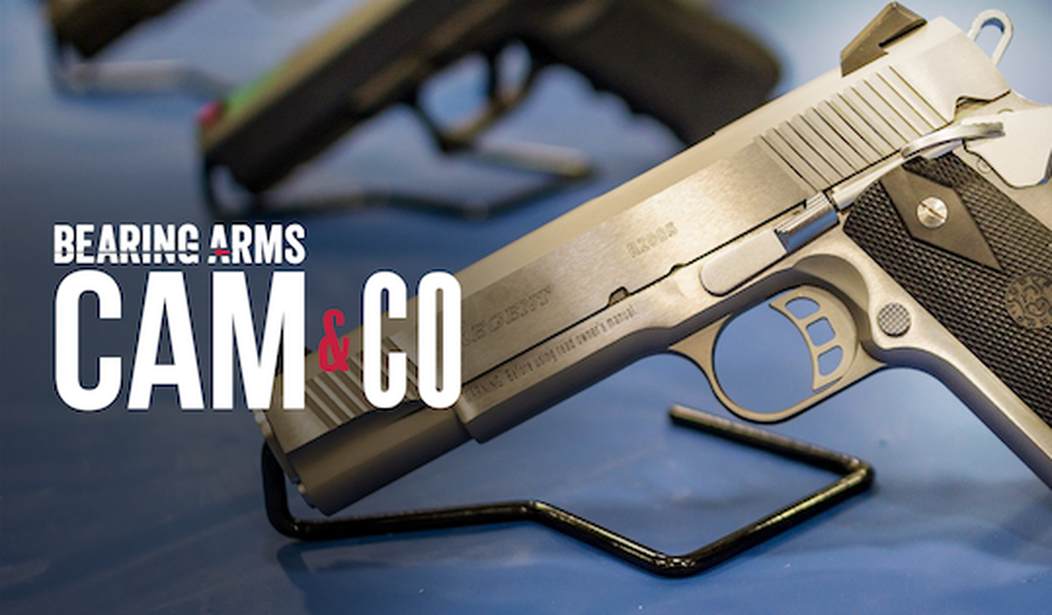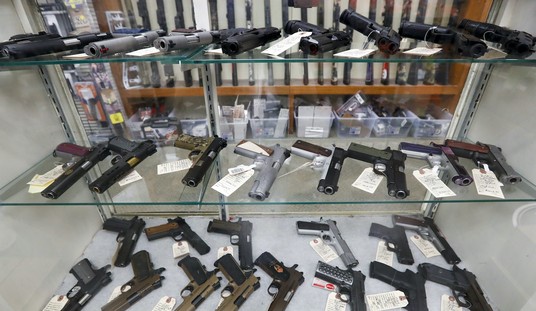After a marathon 12-hour board meeting on Monday that saw reformers win key leadership positions, NRA board members Amanda Suffecool and Jim Wallace are giving the Bearing Arms Cam & Co community an inside look at last weekend's Annual Meeting, the fight to reform the organization, and both the challenges and opportunities ahead for the NRA as it seeks to regain the trust of members and 2A supporters.
Both board members say they're gratified by the support shown from NRA members throughout the weekend, including at Saturday's Members Meeting, where a majority of those in attendance voted down a resolution supporting a potential move of NRA headquarters from Fairfax, Virginia to Dallas, Texas. Suffacool was among those speaking out in opposition to the resolution, and tells Bearing Arms there simply wasn't enough information given to members (or board members, for that matter) to make an informed decision.
I'm an analytic person. I have spent my entire career as an engineer in operations; moving plants, consolidating plants, picking up companies that were in trouble. So I want to see data to make the best decisions.
Neither then-NRA president Charles Cotton or interim executive vice president Andrew Arulunandam could provide a bottom line cost for the NRA to move its operations to the Lone Star State, though both claimed the move would save the organization tens of millions of dollars. Suffecool says she's open to the idea that it might make sense to sell the NRA's current building and relocate once she learns more details, but she's not convinced that Texas should automatically be the organization's next destination.
Saturday's meeting of NRA members, as well as Wallace's election as the 76th Board member, signaled that the reformers had significant support from the rank-and-file, but Suffacool didn't know whether that would translate to board support. When the board voted to hold the elections of officers in the open, rather than in executive session as the agenda stated, Suffacool says she was encouraged, but admitted that reformers were taken aback a bit when Bob Barr was selected as the NRA's next president over reform candidate Owen "Buz" Mills.
We went into lunch going, 'okay, if that's the case then where are the change candidates, where are the reform candidates? What's going to happen next?
What happened next was that reform candidates won elections for First Vice President, Second Vice President, and Executive Vice President. So why did the board members split their votes? Suffacool believes that some board members felt that Barr, as a former congressman, "had the chops to be in the fight" and was a familiar face as the NRA heads into the upcoming civil lawsuit against the organization brought by New York Attorney General Letitia James.
Wallace largely concurred with Suffacool's take. In his view, a majority of the board wanted to strike a balance between change and consistency in leadership, believing that will best position the organization to avoid having a special monitor appointed to oversee the NRA's operations when the trial wraps up.
Even the reformers seem to have adopted that position to some degree by nominating Doug Hamilin, NRA's head of publications, to serve as executive vice president. Hamlin is hardly an outsider, but Wallace says he believes Hamlin's the right person for the job.
I know some people will look at that and go, 'well, he was a part of the Wayne cabal'. Doug is one of the most professional people I've ever dealt with, especially in this world, and he has saved the NRA millions of dollars over the years. One of the reasons we could convince people, and nothing against Ronnie Barrett [the nominating committee's choice for EVP], I love him, and it was almost a no-lose situation between the two of them, but Doug knew the staff. He knew everybody involved, already had a plan in place, and was ready to rock that night. There was no lag time. Boom, he was in, and he was off and running.
Hamlin wasn't the only one with a plan going into the board meeting. Wallace says he and several other board members had been talking amongst themselves for several months before Monday's board meeting; both to strategize but also to kick around some of the facts they were learning from the trial where the misspending on the part of NRA executives like Wayne LaPierre were fully revealed.
We really decided that the NRA needed a breath of fresh air. We didn't like the way things were going, and I actually used the analogy many times, even when talking to leadership... a million years ago when the warriors would leave the village to fight the enemy, they were victorious, but they'd return home and the village was burned to the ground.
It was my belief that the laser beam focus on the trial meant that pretty much everything else was being ignored, and that can't happen.
So a group of us got together, decided we weren't going to try to pull something swift or break the rules. We were going to do everything aboveboard, and we worked extraordinarily hard for three months. By the time we got to the Annual Meeting we had a plan in place. Again, it wasn't a coup, or an overthrow, or angry.
In fact, as much as people don't like Charles Cotton, I will hand it to him. He ran that meeting with the utmost professional meeting. The board meeting. Not such the meeting of members, but at the board meeting.
So we had a slate of officers, and we announced our plan more or less to the board that weekend, and I've gotta say, we were pretty darn successful.
So what happens next? Both Wallace and Suffacool noted that the second NRA trial is looming in New York, and much of the NRA's future depends on the outcome. They both agreed, however, that this year's Annual Meeting is a turning point for the organization's leadership, and now it's time to demonstrate that the new emphasis on transparency and accountability isn't a gimmick or rebranding effort but a new chapter for the 153-year-old organization.
I spoke with Suffacool and Wallace for almost an hour, so this barely scratches the surface of our discussions. Be sure to check out the entire conversations in the video window below, and stay tuned for more coverage of the NRA's next chapter. We'll be speaking with more board members in the days ahead, and I'm hoping to speak with both Barr and Hamlin in the near future as well.
For those of us who want to see a strong NRA that can defend and strengthen our Second Amendment rights while providing training, education, and outreach to new gun owners and even non-gun owners, the developments at the Annual Meeting are important steps, but significant challenges remain. As Jim Shepard wrote at the Outdoor Wire on Tuesday, "there may be a small glimmer of light at the end of what is still a very long, very dark tunnel."
What lies ahead for the NRA lies something between (continued) irrelevancy and bankruptcy. This bankruptcy, however, won’t be a Brewer-designed shenanigan designed to avoid New York courtrooms.
This NRA bankruptcy could actually mean insolvency, if not liquidation.
Ultimately, one simple question remains: does the NRA even have a future?
I'd say it has more of a future than it would have if the old guard prevailed last weekend, but the strength of the NRA has always been in its members. If they can bring back those who've let their memberships lapse, give gun owners who've never belonged a reason to join, and show donors that they won't be wasting their money by writing the NRA a check, it can survive and even thrive one day. If the reform movement stalls out and become a case of "meet the new boss, same as the old boss", its days are probably numbered. As one who thinks the 2A community is better off with a strong NRA, I'm rooting for the reformers, but their success is far from guaranteed.









Join the conversation as a VIP Member